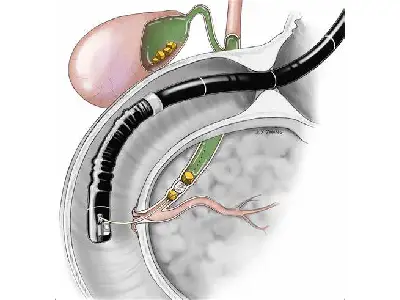ERCP (Endoscopic Retrograde Cholangio-Pancreatography)

ERCP stands for Endoscopic Retrograde Cholangiopancreatography, which is a medical procedure used to diagnose and treat conditions related to the liver, gallbladder, bile ducts, and pancreas. Here’s an overview of what ERCP involves:
Endoscopy: ERCP is performed by a gastroenterologist, a doctor who specializes in digestive system disorders. It typically takes place in a hospital or an outpatient surgical center. The patient is sedated or given anesthesia to make them comfortable and relaxed.
Endoscope: A long, flexible tube with a tiny camera and a light on the end, called an endoscope, is used. The endoscope is inserted through the mouth, down the esophagus, and into the stomach and duodenum (the first part of the small intestine).
Contrast Dye: Once the endoscope is in place, a contrast dye is injected into the bile ducts and pancreatic ducts. This helps these ducts show up clearly on X-rays.
X-ray Imaging: X-ray images are taken as the contrast dye flows through the ducts. These X-rays help the doctor identify any blockages, narrowing, or other abnormalities in the bile ducts or pancreatic ducts.
Treatment: In addition to its diagnostic uses, ERCP can also be used for therapeutic purposes. For example, if a blockage is identified during the procedure, the doctor can often remove or alleviate it using specialized tools passed through the endoscope. This can include removing gallstones, placing stents to keep the ducts open, or taking tissue samples (biopsies) for further examination.
Recovery: After the procedure, the patient is usually monitored in a recovery area until the sedation wears off. It’s common to have a sore throat for a day or two after the procedure. Some patients may experience mild discomfort or bloating as well.
ERCP is a valuable tool for diagnosing and treating conditions like gallstones, bile duct obstructions, pancreatitis, and certain cancers. However, like any medical procedure, it carries some risks and should be performed by trained professionals in a controlled medical setting.
It’s important to discuss the risks and benefits of ERCP with your healthcare provider if you are advised to undergo this procedure. They can provide you with more specific information based on your individual medical condition and needs.
